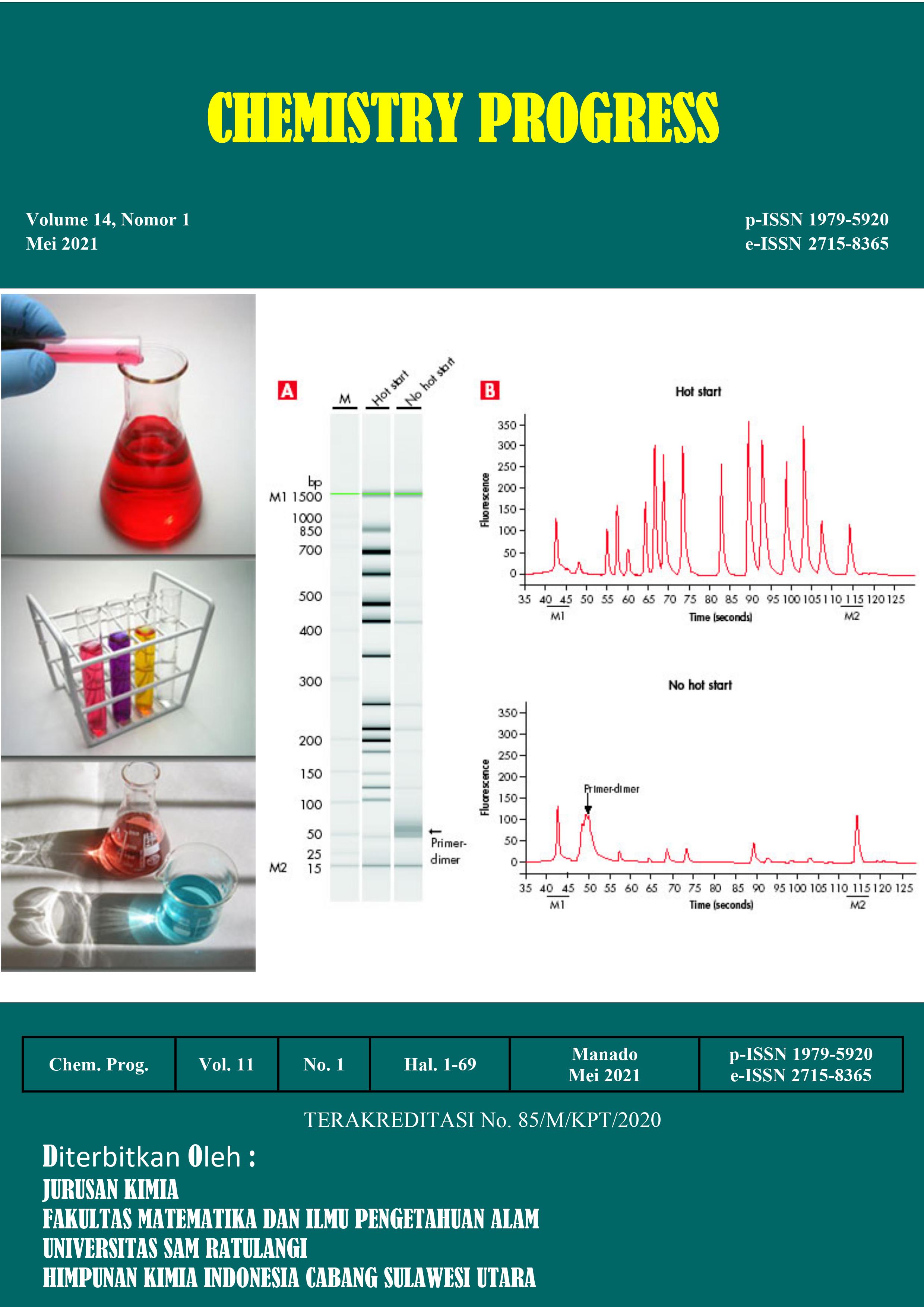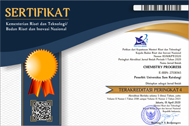PEMBUATAN NANOKOMPOSIT KITOSAN/TiO2/Ag DAN ANALISIS AKTIVITASNYA SEBAGAI ANTIBAKTERI
DOI:
https://doi.org/10.35799/cp.14.1.2021.34128Keywords:
nanokomposit, kitosan, TiO2, Ag, antibakteriAbstract
Penelitian tentang pembuatan nanokomposit kitosan/TiO2/Ag telah dilakukan dengan menggunakan TiO2sebanyak6 gram dan konsentrasi AgNO3 yaitu 5 mM menggunakan metode reduksi dan impregnasi. Nanokomposit yang dihasilkan dikarakterisasi menggunakan X-Ray diffractometry (XRD), Scanning Electron Microscope-Energy Dispersive x-Ray Spectroscopy (SEM-EDS) dan menganalisis aktivitasnya sebagai anti bakteri terhadap Staphylococcus aureus (Gram positif) dan Escherichia coli (gram negatif). Hasil penelitian menunjukkan bahwa ukuran nanokomposit yang dihasilkan sebesar 56,93 nm. Difraktogram XRD muncul puncak karakteristik partikel TiO2 tetapi partikel Ag kurang terlihat jelas. Namun, berdasarkan data EDS, kedua partikel ini ditemukan pada membran kitosan. Ini menunjukkan bahwa sangat sedikit partikel Ag yang terbentuk atau keterbatasan alat XRD dalam mendeteksi sejumlah kecil partikel. Namun demikian, nanokomposit menunjukkan kemampuannya untuk menghambat pertumbuhan kedua bakteri ini.
ABSTRACT
Research on the manufacture of chitosan/TiO2/Ag nanocomposites has been carried out using 6 grams of TiO2 and 5 mM AgNO3 using reduction and impregnation methods.The resulting nanocomposites were characterized using X-Ray diffraction (XRD), Scanning Electron Microscope-Energy Dispersive x-Ray Spectroscopy (SEM-EDS) and analyzed their activity as anti-bacteria against Staphylococcus aureus (Gram positive) and Escherichia coli (gram negative).The results showed that the resulting nanocomposite size was 56.93 nm. The XRD diffractogram showed the peak characteristics of TiO2 particles but the Ag particles were less visible.However, based on EDS data, the two particles were found on the chitosan membrane. This indicates that very few Ag particles are formed or the limitations of XRD devices in detecting a small number of Ag particles.However, the nanocomposites demonstrated their ability to inhibit the growth of these two bacteria.













